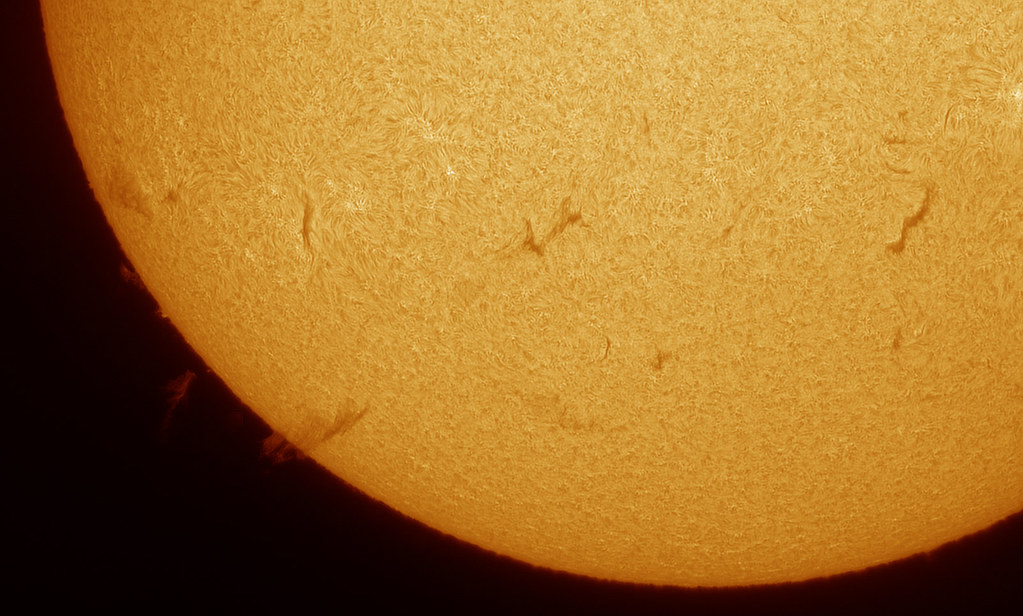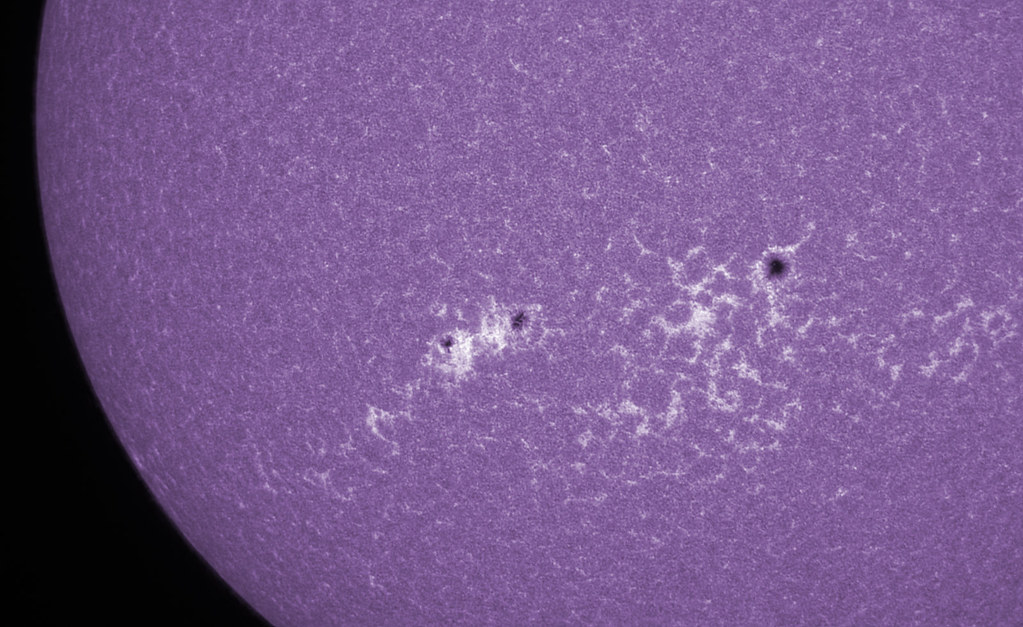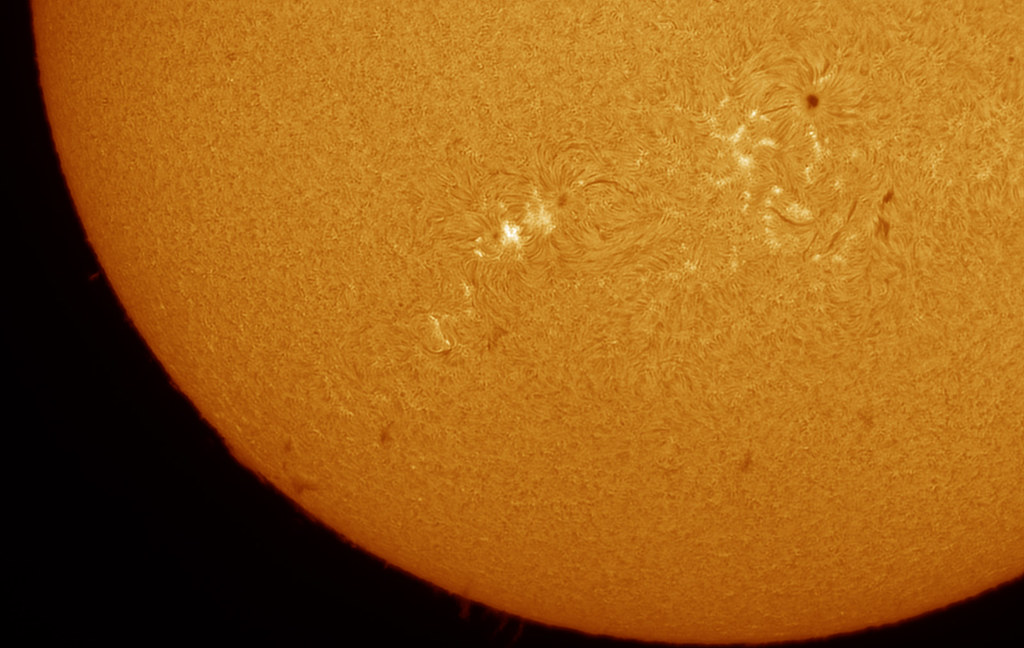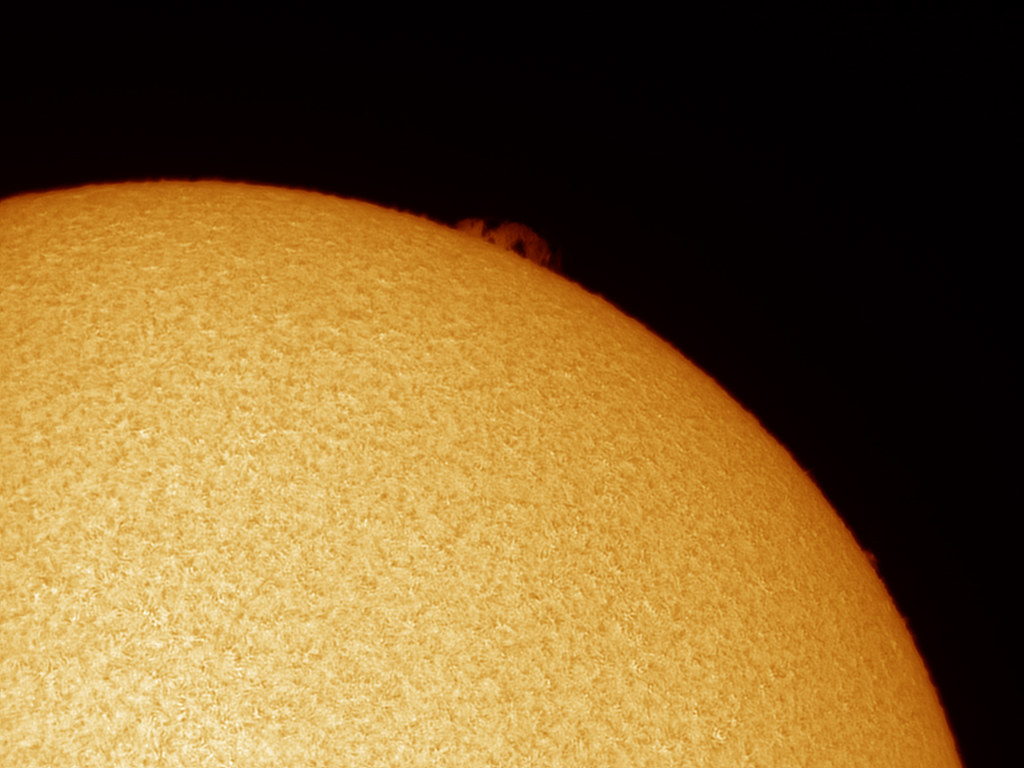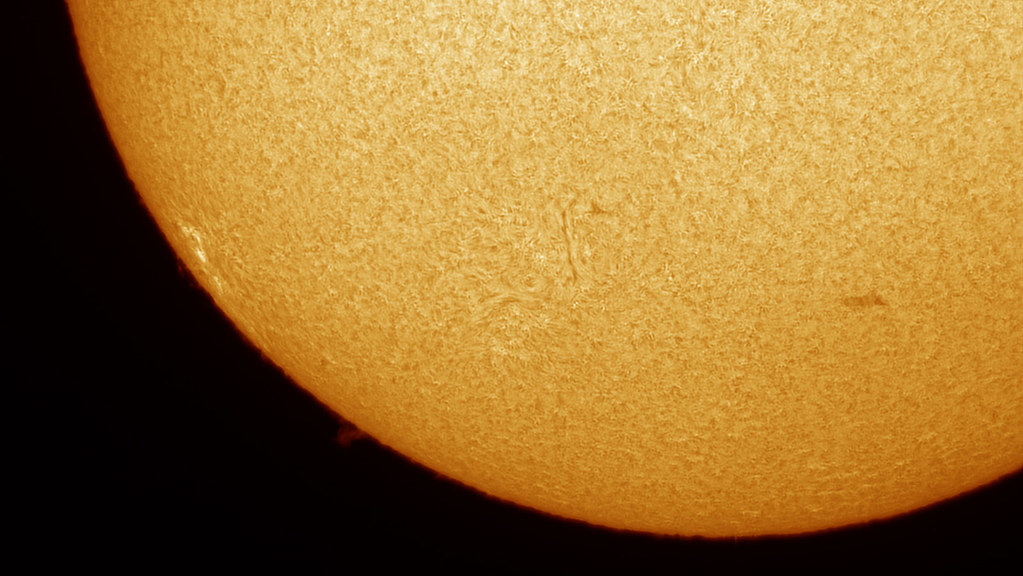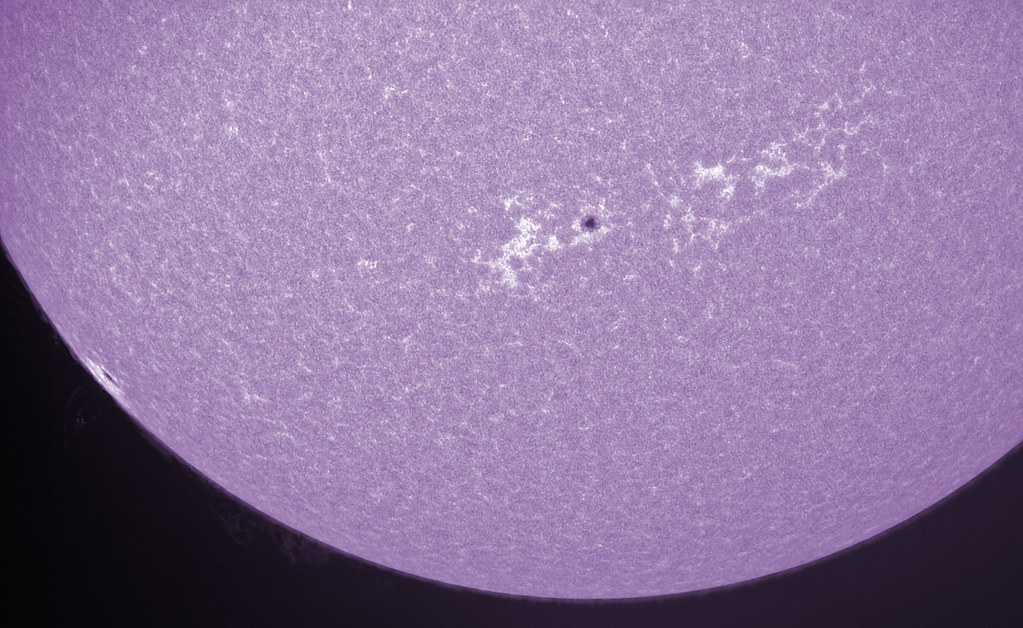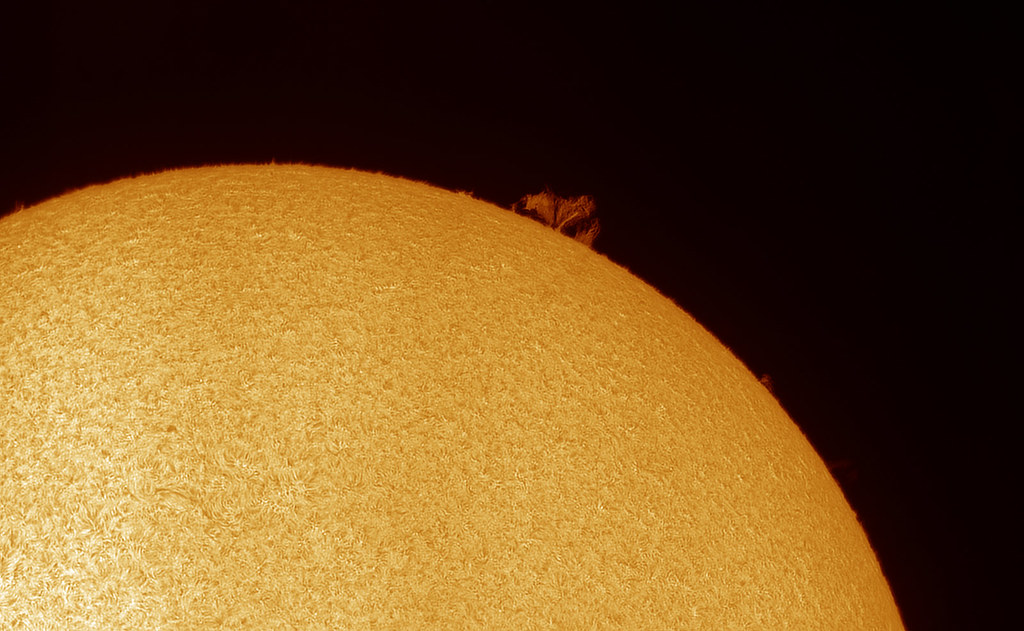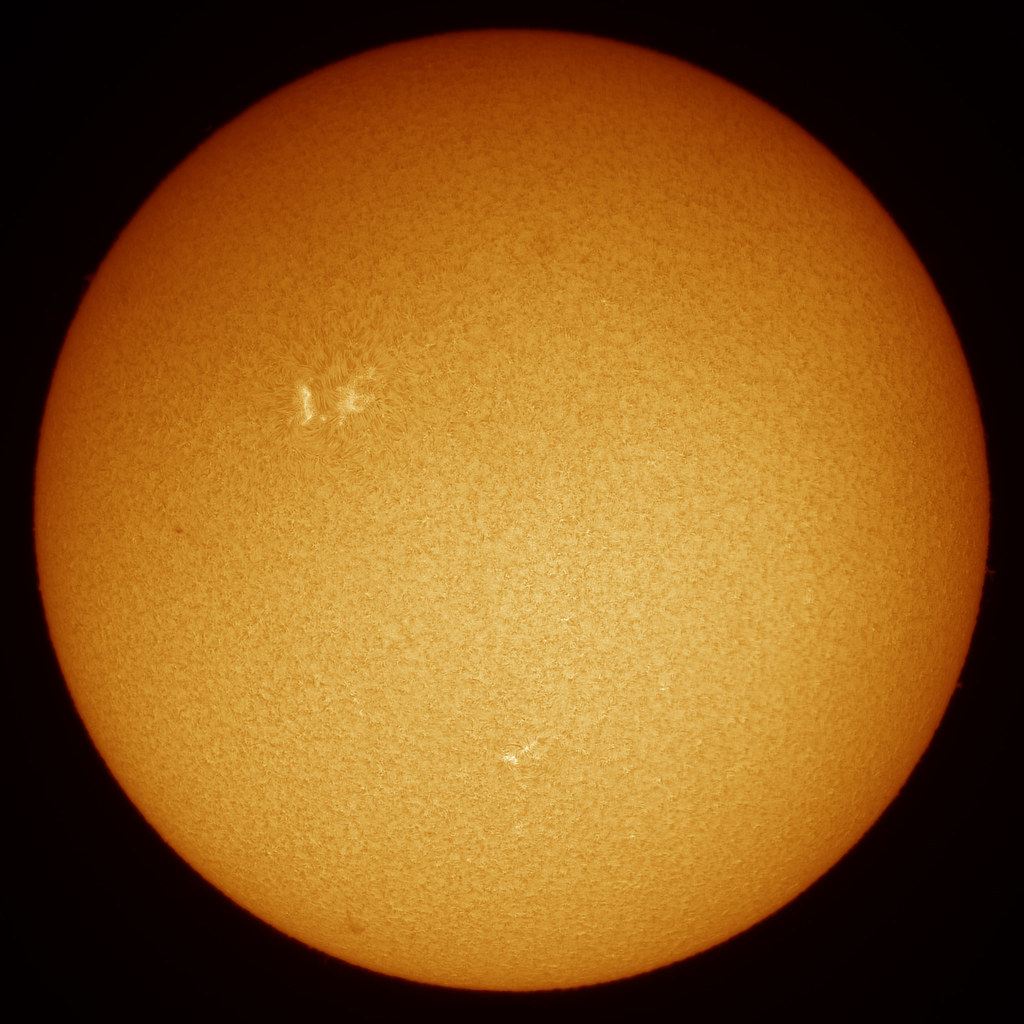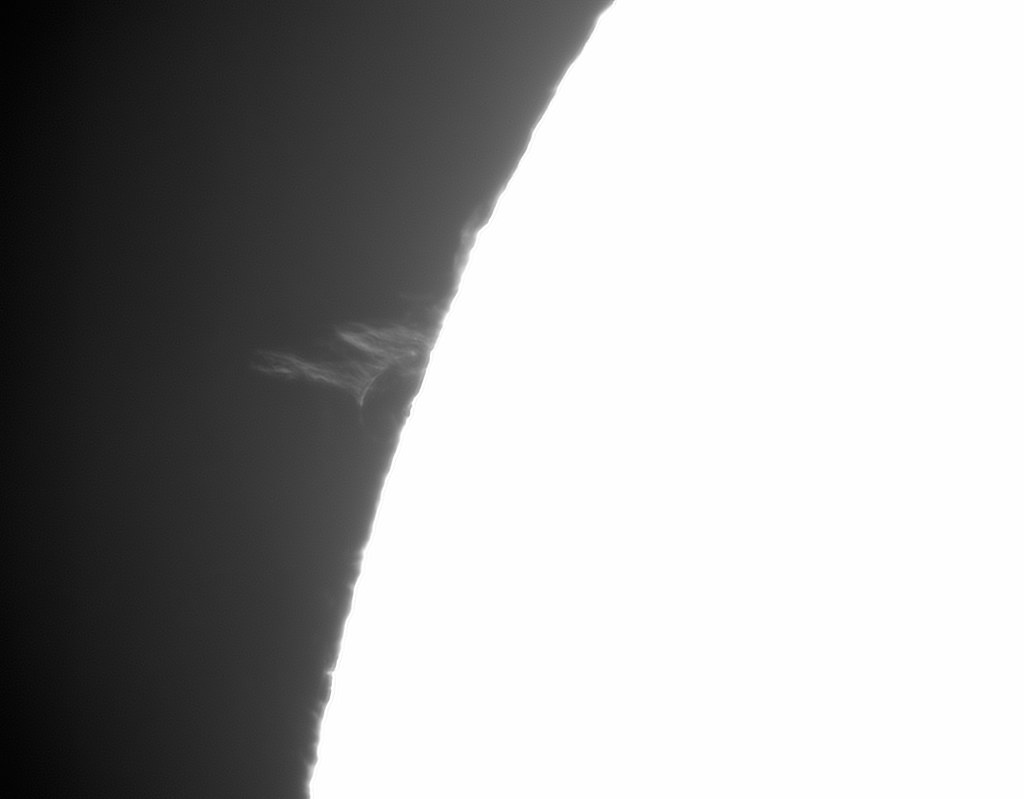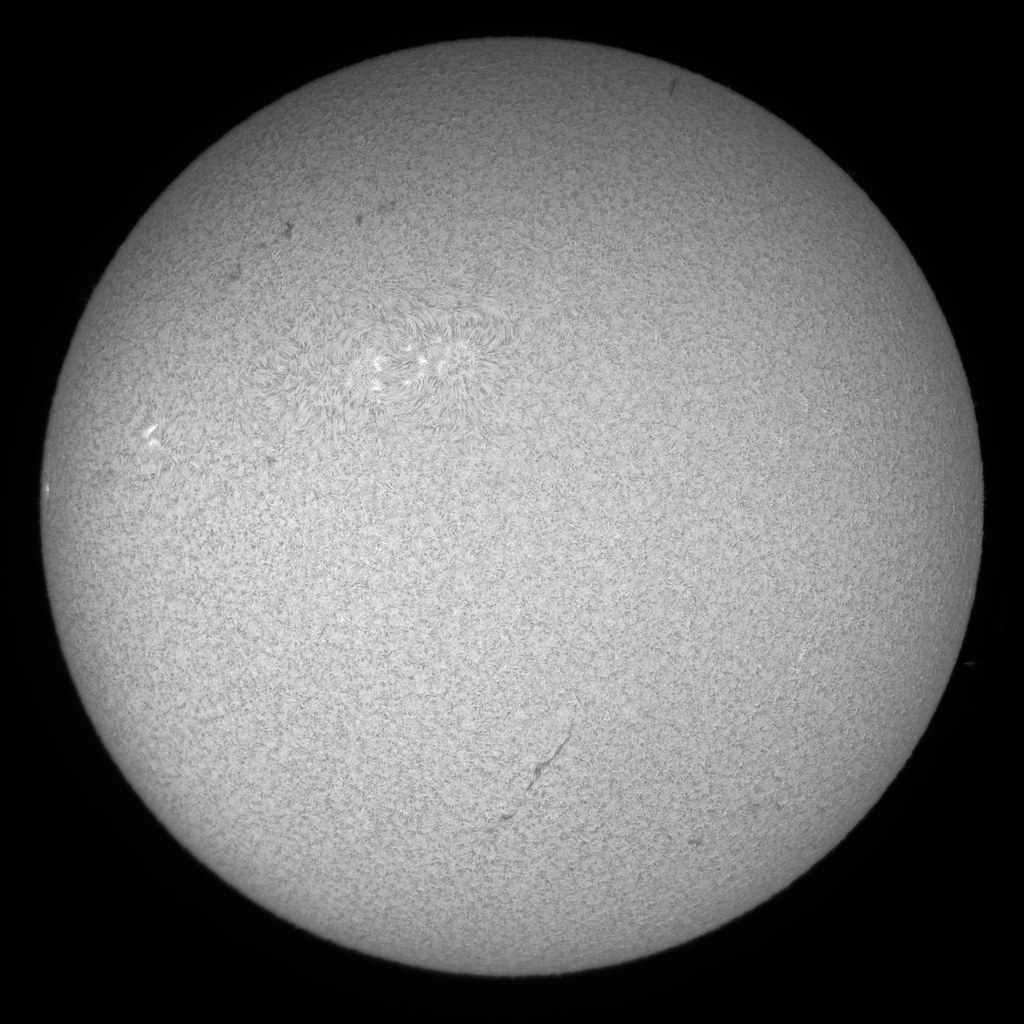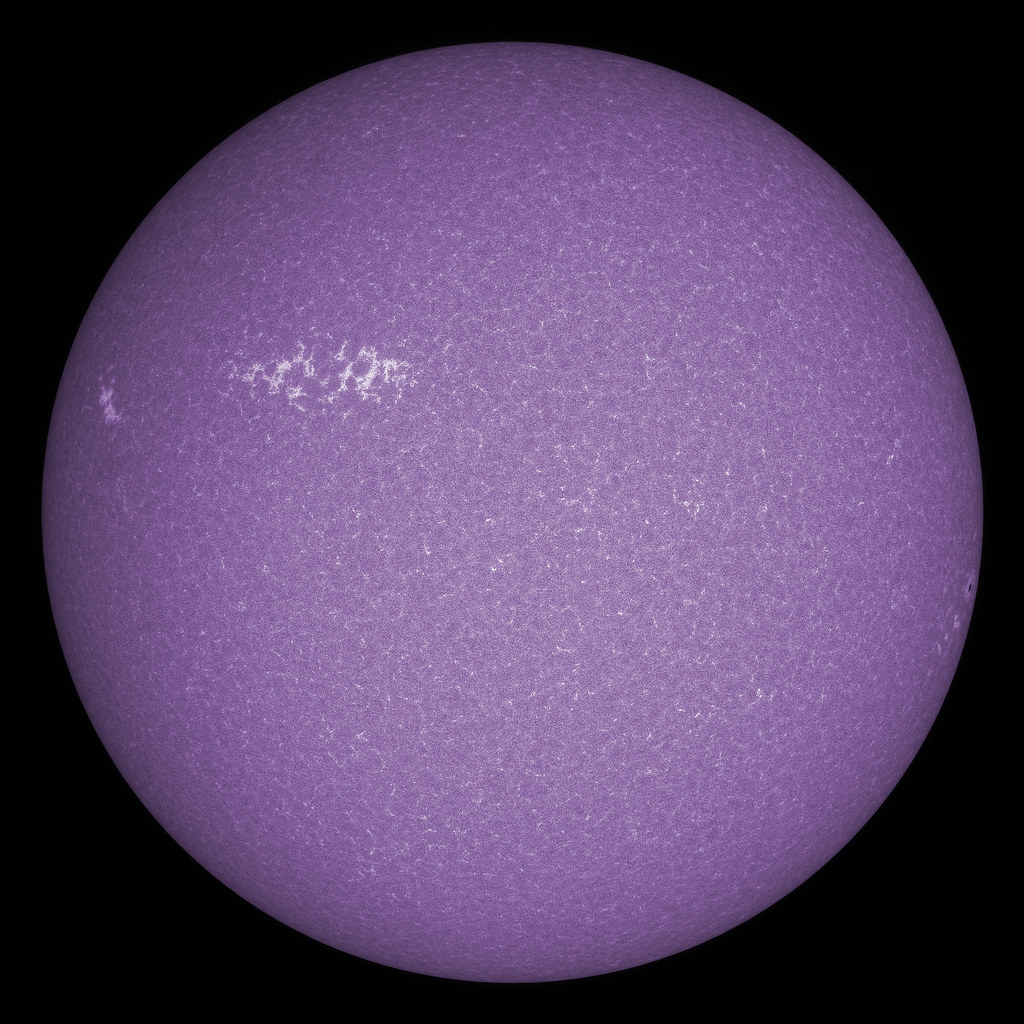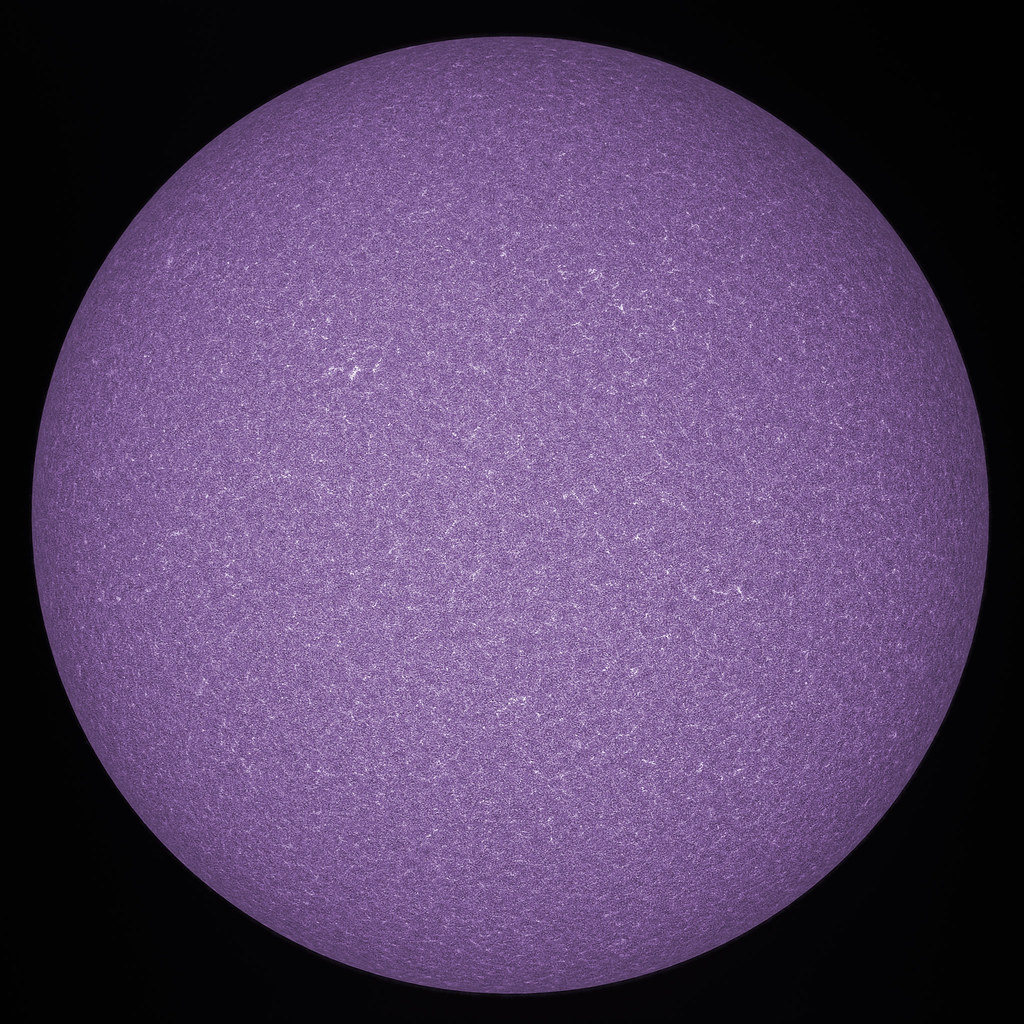 December has been a productive month for me solar wise, no doubt helped by clear skies at the weekends, but also by the concrete observing pad constructed during lock down in May which gives me a view of the afternoon sunshine in winter time. It's nice as we come to the end of the year solar cycle 25 is firmly active in the suns southern hemisphere. I used the Coronado 40mm f10 scope with a 2x Cemax barlow along with the FLIR GH3 91S6M camera for this full disk.
December has been a productive month for me solar wise, no doubt helped by clear skies at the weekends, but also by the concrete observing pad constructed during lock down in May which gives me a view of the afternoon sunshine in winter time. It's nice as we come to the end of the year solar cycle 25 is firmly active in the suns southern hemisphere. I used the Coronado 40mm f10 scope with a 2x Cemax barlow along with the FLIR GH3 91S6M camera for this full disk.
Thursday 31 December 2020
CaK Full Disk 31st December 2020
 December has been a productive month for me solar wise, no doubt helped by clear skies at the weekends, but also by the concrete observing pad constructed during lock down in May which gives me a view of the afternoon sunshine in winter time. It's nice as we come to the end of the year solar cycle 25 is firmly active in the suns southern hemisphere. I used the Coronado 40mm f10 scope with a 2x Cemax barlow along with the FLIR GH3 91S6M camera for this full disk.
December has been a productive month for me solar wise, no doubt helped by clear skies at the weekends, but also by the concrete observing pad constructed during lock down in May which gives me a view of the afternoon sunshine in winter time. It's nice as we come to the end of the year solar cycle 25 is firmly active in the suns southern hemisphere. I used the Coronado 40mm f10 scope with a 2x Cemax barlow along with the FLIR GH3 91S6M camera for this full disk.
Filaments and Prominences 31st December 2020
CaK Views 27th December
Ha Views 27th December
Saturday 12 December 2020
AR12790 Departing 12th December
Prom! 12th December
New Active Region 12th December
Ha Full Disk 12th December
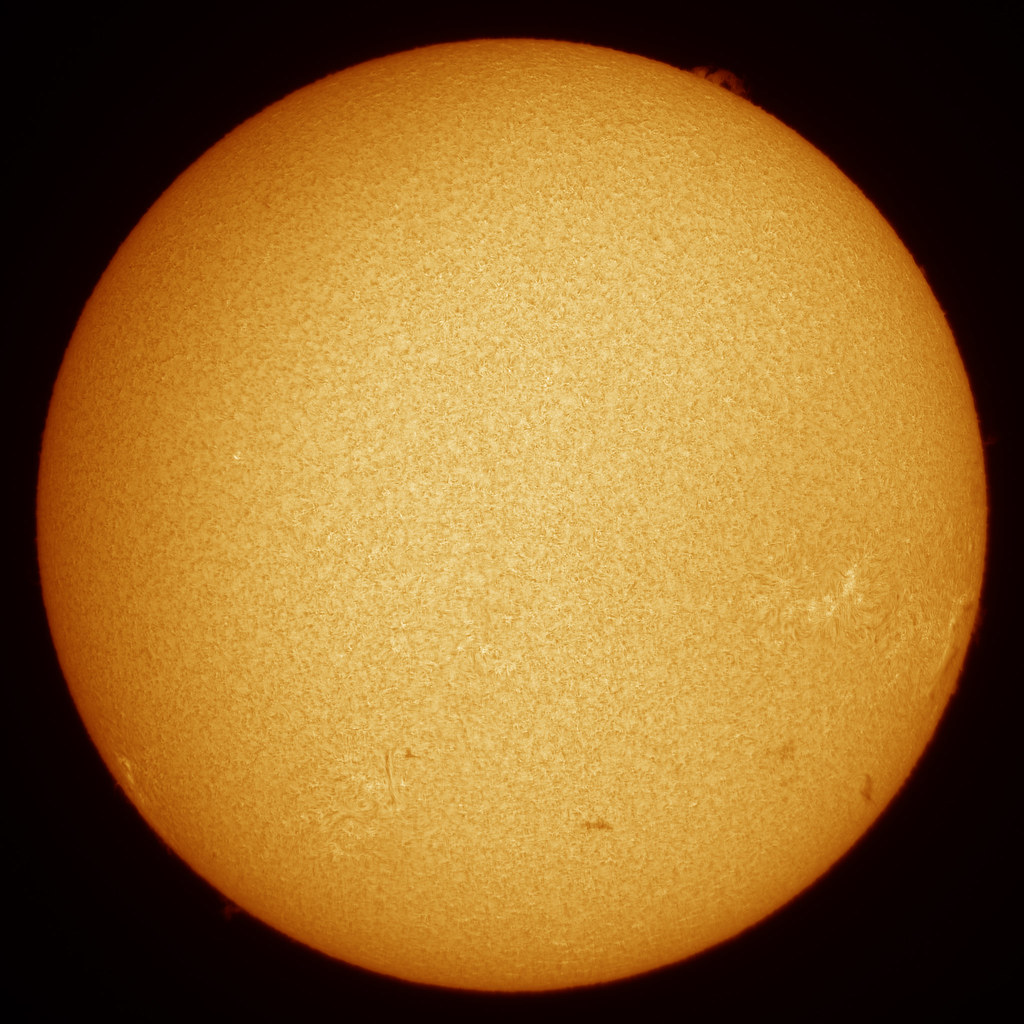
It was nice to get some sunshine this Saturday afternoon, and despite the sun being quieter than it was a couple of weeks ago there is considerably more activity than there was in solar minimum. The southern hemisphere is still currently the most active. Taken with a Lunt 50 etalon, double stacked with a Daystar Quark and a FLIR GH3 91S6M camera.
Sunday 6 December 2020
Ha Full Disk 5th December.

Activity really is increasing on the sun, particularly so in the southern hemisphere which has just erupted into life over a couple of solar rotations. I was fortunate to be able to observe as the forecast was for sleet all day, but turned out quite nice and predominantly blue skies. The observing pad I created during the first lockdown is working well, and in conjunction with my 7 foot pier looking over a 6 foot fence to see the sun is quite feasible. It has a bit of bounce to it and is only really suitable for smaller scopes, but, in winter, with the low sun this is not a problem. As the sun gets higher in the sky in the spring I will replace the 7 foot pier with the 5 foot pier which is notably more stable. This image was taken with a Lunt 50 etalon on a 60mm f6 scope and then double stacked with a Daystar Quark.
CaK Sun 22nd November
Ha Sun 22nd November
Monday 12 October 2020
Ha Full Disk 11th October
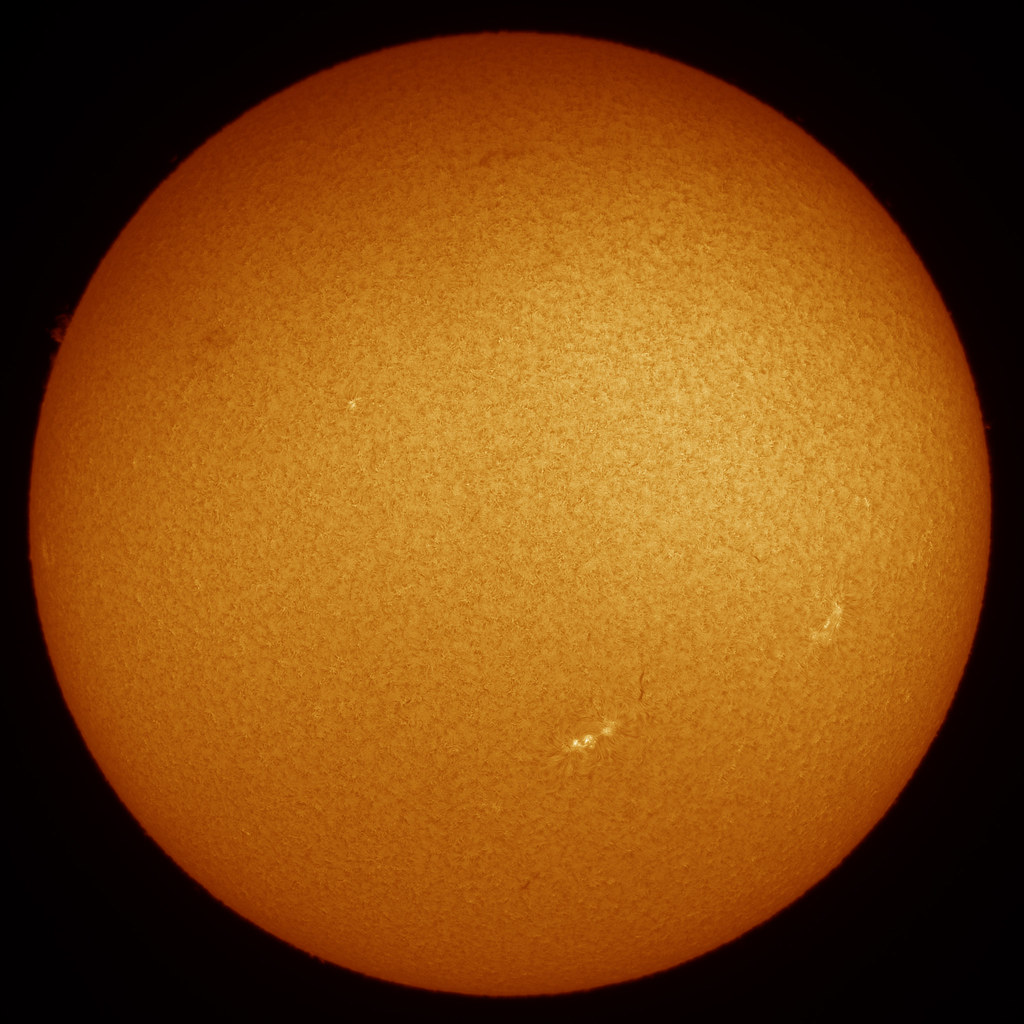
The sun finally showed itself this weekend and with some cycle 25 activity kicking in I decided it was worth getting the scope out for a look. The sun is now getting much lower in the autumn sky as we head towards mid October and the seeing even at 50mm aperture was not on my side, still it was nice to see our star and the developing activity from this new solar cycle.
Monday 28 September 2020
AR12773 in Ha - 27th September
Ha Full Disk 27th September
Tuesday 1 September 2020
Cycle 25 Plage and Filaments - 30th August

Cycle 25 is certainly starting to get underway on our star. While the magnetic fields may not be strong enough to form sunspots in this image, the are signs of turbulence in the form of both brighter page and also the darker patches of filaments - cooler clouds of plasma held aloft by magnetic fields. This image was taken with the Coronado SM90 double stacked with a Daystar Quark and Airylab 2.8x telecentric and a PGR Grasshopper 3 camera with IMX174 chip.
Monday 31 August 2020
Cycle 25 Plage in CaK - 30th August
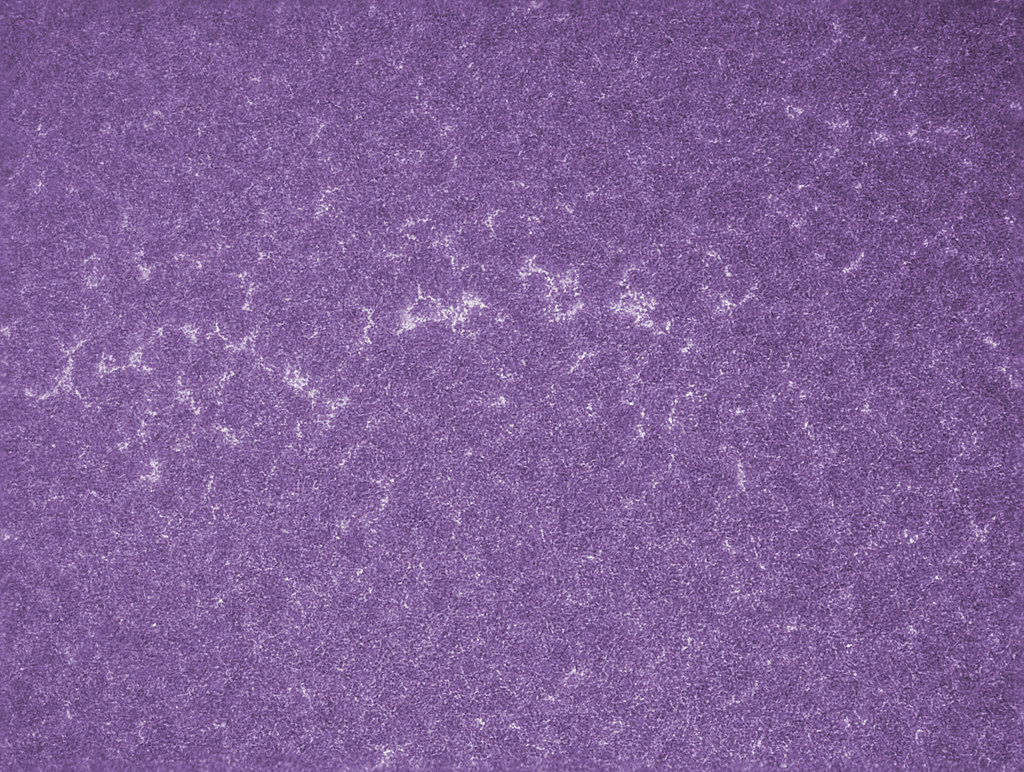
A close up of the region of cycle 25 plage taken with the 100mm Tal Refractor at f28, using the Airylab telecentric, homebrew CaK filter and the FLIR IMX174 camera. The seeing was just on the limit for the aperture used and I had to take a lot of frames to get a usable image from them out of the other end.
CaK Full Disk 30th August
Proms! 30th August
Monday 3 August 2020
A Trio of Active Regions 3rd August
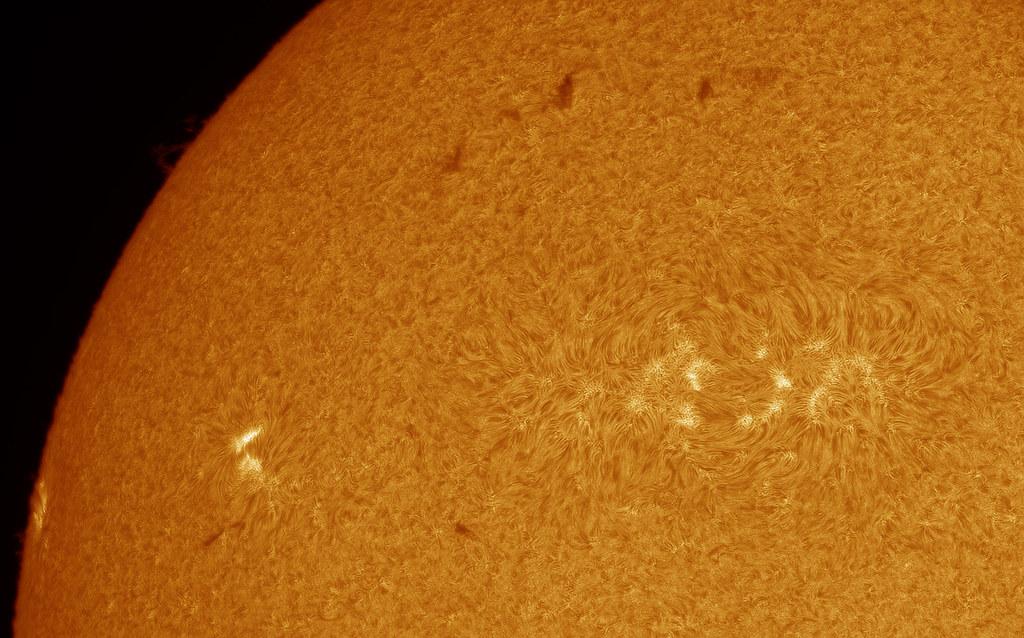
Cycle 25 really is coming alive and for the first time in years we have three active regions lined up in a row. It was nice to see so much bright plage on what has been a quiet sun for too long. Taken with the Coronado SM90 double stacked with the Daystar Quark, Airylab 2.7x telecentric and the FLIR Grasshopper IMX174 camera.
AR12769 & AR12770 in Ha With the Airylab HaT 3rd August

I was pleased to be able to frame both active regions in one shot with this image taken earlier this morning. The new active region on the limb was showing one spot when imaged, however looking later in the day there is actually a pair of decent sized spots. The new active region appears to be quite dynamic and there was surging going on when the area was imaged. Taken with the 8" Airylab HaT, 2.7x Airylab telecentric, Daystar Quark and FLIR IMX174 camera. Pleased with how this image came out as my seeing doesn't usually support these larger apertures.
AR12768 in Ha with the HaT - 3rd August
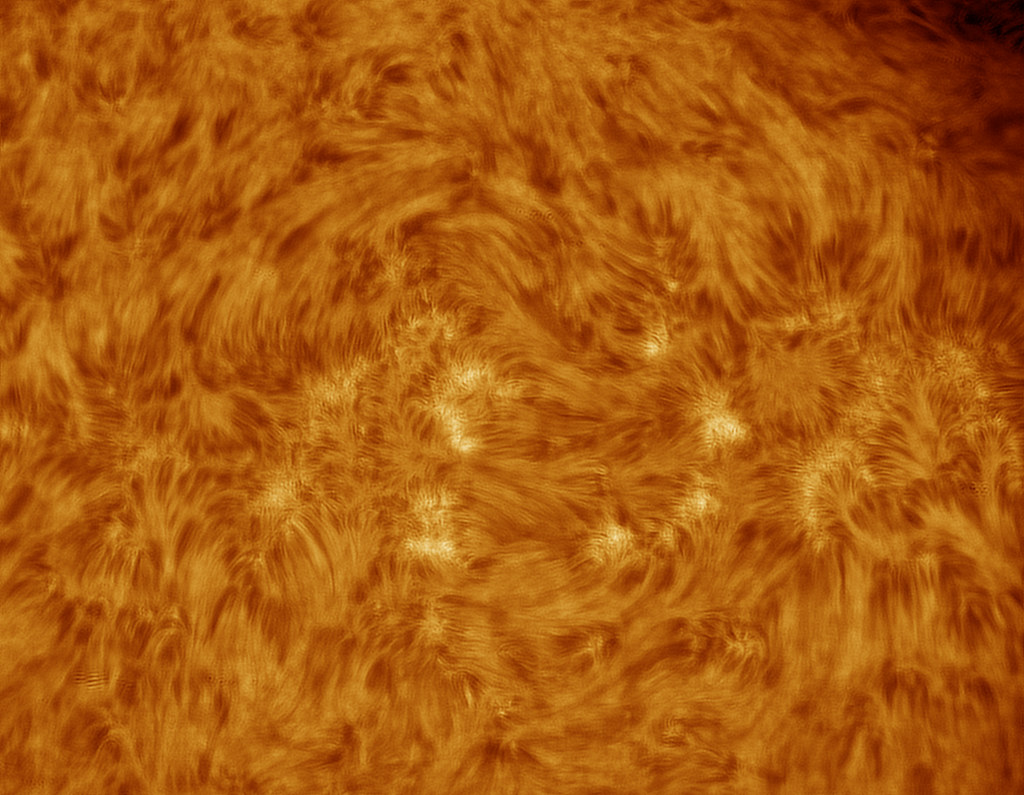
The seeing was obliging first thing this morning and so I decided to give the 8" Airylab HaT a run to see what I could get on the cycle 25 activity we have at the moment. Conditions were just about holding up using this aperture and I was using. The Daystar Quark and an IMX174 camera was used to image. I was surprised at how much bright plage there still was in this quite rapidly decaying active region.
Ha Full Disk 3rd August
AR12768 & AR12769 in CaK 2nd August

I was very lucky to catch excellent seeing first thing on Sunday morning before the clouds rolled in. Both these active regions have very small sunspots which suggests a relatively low magnetic field strength, however, we are only just at the start of cycle 25. Taken with the 100mm Tal refractor at f27 with the Airylab 2.7x telecentric and the FLIR IMX174 camera. There is lots of fine detail in these images when viewed full size!
AR12767 in CaK 2nd August
CaK Full Disk 2nd August
Saturday 1 August 2020
Flame Proms and Coronal Rain 31st July
As I came to the close of yesterdays imaging session I couldn't resist a go at imaging the flame prom that has been around for the past couple of days. I managed 8 individual images before the hard disk was full, and after processing to my surprise was the considerable amount of movement of plasma in the individual frames. At nearly 200,000km high this prominence showed quite active coronal rain falling back towards the solar surface. Taken with the 118mm scope at f27, with a daystar Quark and a FLIR IMX174 Grasshopper 3 camera.
AR12768 in CaK 31st July

Taken with the 118mm scope at f27 (127mm scope stopped down to 118mm to give f10, and then 2.7x telecentric) I was keen to remind myself how this performed at these shorter wavelengths. It is considerably softer than my 100mm Tal, but it does just about work, at 656nm it is a much stronger performer and does well when the seeing allows it. I still think a 150mm f8 scope stopped down to 120mm would give better results and this is on the radar of my shopping list.
AR12768 in Ha 31st July
Ha Full Disk 30th July
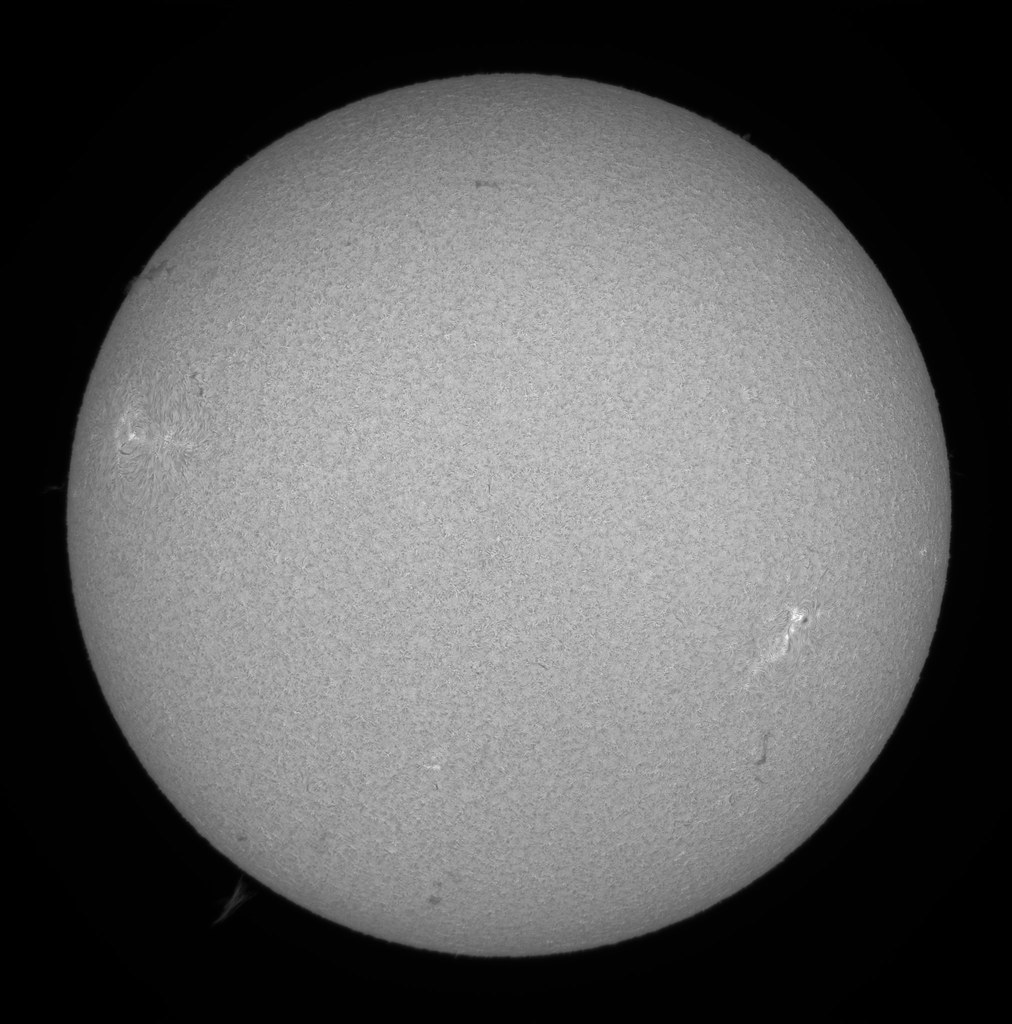
I seem to have sorted out the issue of pinched optics on the 60mm f6 donor scope that I use for my full disks, and now the whole of the sun remains in focus which is good. It's nice to see so much activity on here for a change and is a sure sign that cycle 25 is slowly but surely kicking in with more activity. Taken with the 50mm Lunt etalon on the 60/f6 and then double stacked with a Daystar Quark to increase contrast and bring out detail.
AR12768 in Ha 30th July

This active region while only having a very small collection of small sunspots in it, certainly covers a decent area on the sun indicating the magnetic fields are they just not very strong. This image was taken with the 118mm scope at f27 which gives nice results and nice image scale, especially when the seeing cooperates.
AR12767 in Ha 30th July
Thursday 9 July 2020
Ha Full Disk 6th July

It has been a while since i've seen a full disk with quite so much activity as this one, yes there are no sunspots or active regions, but there is plenty of plage activity and filaments that show signs of cycle 25 magnetism just below the surface at the higher latitudes, there is even some relic cycle 24 activity floating around the equator. All this is a positive sign the solar doldrums are slowly going behind us. Taken with a Lunt50 etalon double stacked with a Daystar Quark on a 60mm f6 scope. A Baader solar telecompressor was used to get the image on the chip of the FLIR Grasshopper 3 camera.
Cycle 25 Activity 6th July

Using the 100mm Tal refractor, 2,7x Airylab telecentric and a Daystar etalon I closed in on the region of activity in the southern hemisphere. Sporting a filament showing the divide in polarity of a region of magnetism, and also a area of brighter plage were visible. Given their low latitudes this indicates it is activity associated with the new solar cycle.
CaK Full Disk 6th July
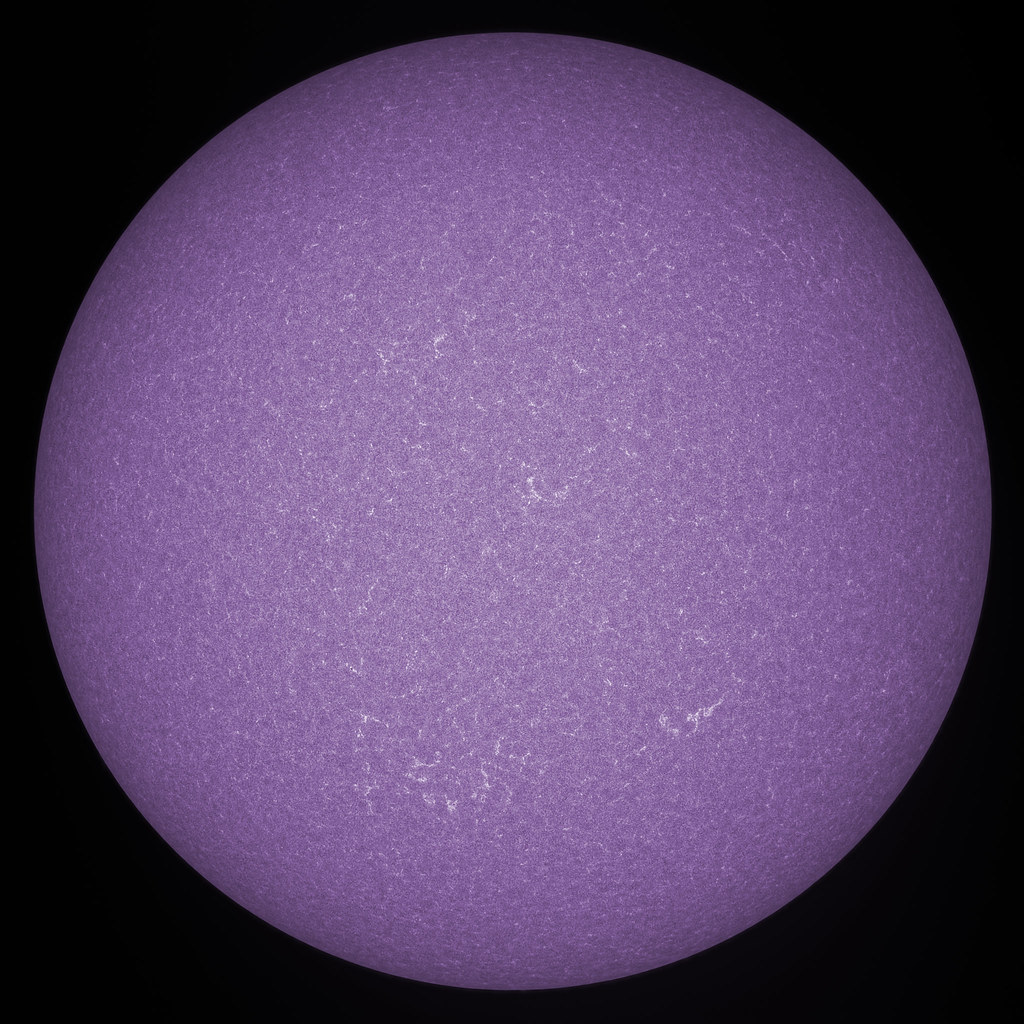
The weather here in the UK really hasn't been great following summer like weather in spring, and now, autumnal weather in summer. Maybe autumn will see a return to summer? Fortunately some late afternoon sunshine allowed me some brief views of our star. Viewing in CaK at 60mm aperture with f16 at both the filter and chip revealed the sun has quite a lot of plage visible at the moment, and while this is only small scale it is abundant and indicative of the cycle 25 jet stream bands of magnetism sat just below the solar surface.
Thursday 25 June 2020
Filament! 24th June
Ha Full Disk 24th June

The sun is well, pretty much blank again! This image whilst not perfect, as the focus shifts in the right hand side of the image, is useful as I think i've worked out that the focus shift is caused by the thumbscrews on the etalon cell being too tight and then pinching the tube and hence optics. I've arranged a slightly different configuration and so are keen to try this out and see if it solves it.
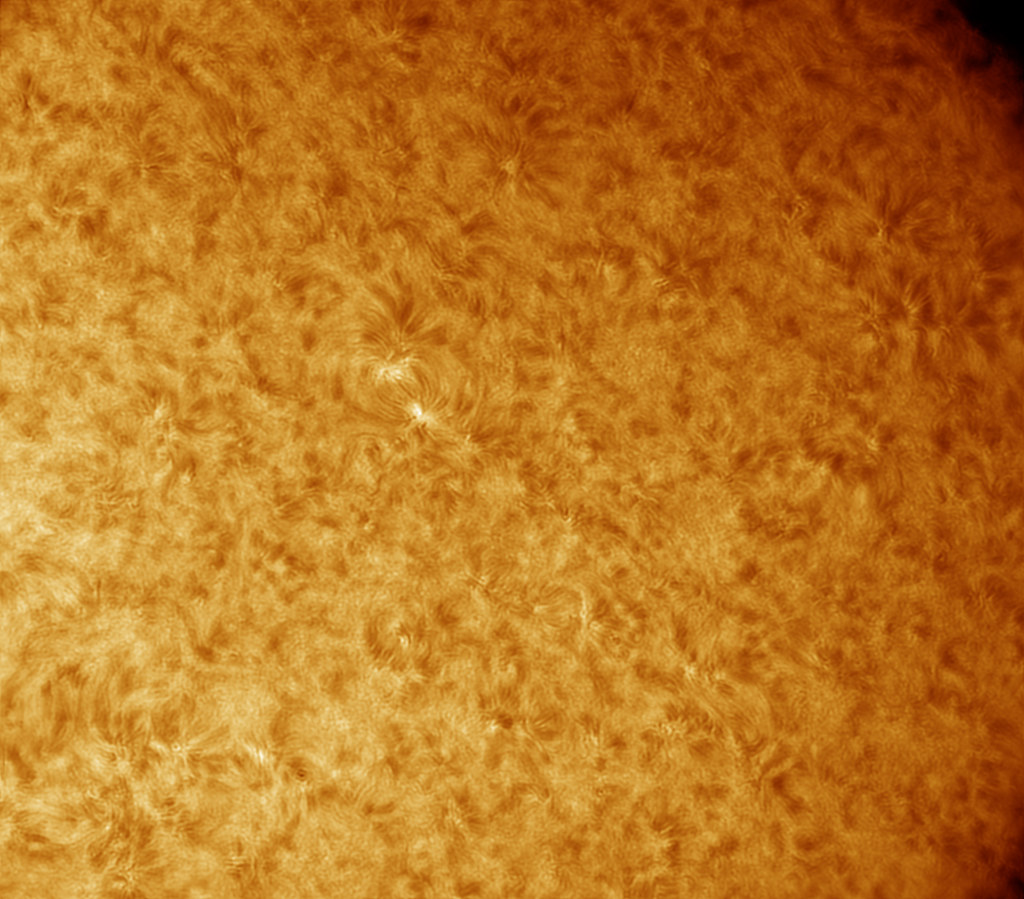
To try and get more use out of the 8" Airylab HaT I decided to make some cardboard masks to stop down the aperture to make it more usable in less than ideal seeing conditions. I made 2, a 175mm and the one I used here which is 155mm. While the conditions we're ideal on one of the hottest days of the year it did produce a usable image and holds potential for greater use in the future.
Tuesday 23 June 2020
CaK Full Disk 22nd June
Subscribe to:
Posts (Atom)

